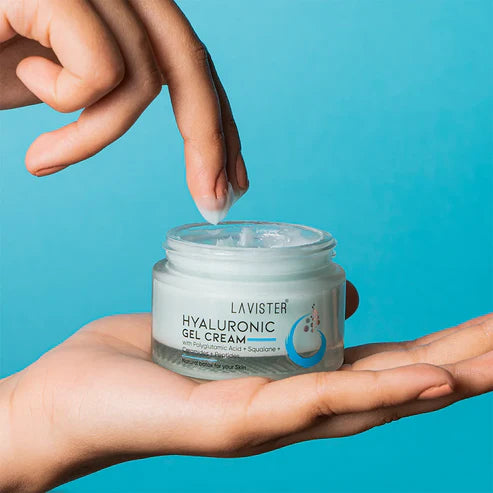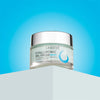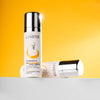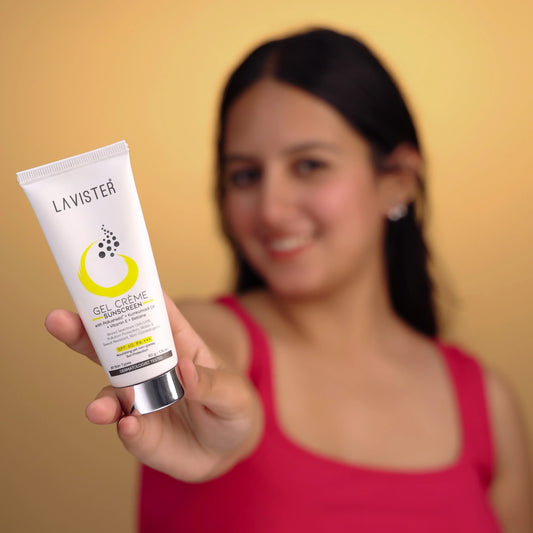Treatment For Dry Skin: A Guide To Skin Hydration
Dry skin can be a struggle, especially when the weather changes or your skincare routine isn’t quite right. But don’t fret. Taking care of your skin hydration is easier than you think!
You only need to have a hydrating cream for dry skin, such as a moisturiser, serum, or sunscreen, by your side.
If you are concerned with slight seasonal dryness or something more persistent, this blog will walk you through the essentials of hydrating your skin.
First, let’s understand why dry skin occurs.
What Causes Dry Skin?
People with dry skin tend to get most affected by flaky skin during the cold season. Generally, dry skin occurs when your skin lacks moisture or natural oils. When it is seasonal, cold and dry air sucks out the moisture from your skin and leaves your skin flaky. Other times, habits like taking long hot showers, using harsh soaps, or skipping a skin hydrating cream can leave your skin feeling parched.
Chronic dryness, however, may be linked to conditions like eczema, psoriasis, or even ageing. Identifying the root cause is essential in finding the right solution and learning how to keep skin hydrated effectively.
A Golden Guide For Skin Hydration
Here are the top strategies to keep your skin hydrated and glowing:
1. Switch to a Hydrating Cleanser
Using the wrong cleanser can strip your skin of its natural oils, worsening dryness. Opt for a gentle, hydrating cleanser with ingredients like hyaluronic acid, ceramides, or glycerin. These help lock in moisture and protect your skin barrier.
Pro Tip: Limit washing your face to twice a day to prevent over-cleansing.
2. Invest in a Hydrating Cream for Dry Skin
A good skin hydrating cream is your best friend, especially during colder months. Look for ingredients like shea butter, squalane, or fatty acids. These deeply moisturise the skin and create a barrier to lock in hydration.
Apply your hydrating cream for dry skin immediately after washing your face or showering to seal in the moisture.
3. Don’t Skip the Serum
A hydrating serum for dry skin works like a tall glass of water for your face. Choose serums with Vitamin C, hyaluronic acid, or niacinamide to attract and retain moisture. Layer it under your best hydrating moisturiser for dry skin for maximum hydration and a plump, dewy finish.
4. Never Forget Sunscreen
Yes, sunscreen is essential even for dry skin! UV rays damage and dehydrate the skin. Opt for sunscreen with hydrating ingredients like aloe vera or hyaluronic acid. Use an SPF of at least 30 daily.
5. Use a Humidifier Indoors
Cool, dry air, especially in winter, can wreak havoc on your skin. A humidifier adds moisture back into the air, preventing your skin from drying out. Keep one in your bedroom or living room for a nightly hydration boost.
6. Exfoliate Gently
Exfoliation helps remove dead skin cells, allowing your hydrating moisturiser to penetrate oily or dry skin better. But go easy! Over-exfoliation can worsen dryness. Use a mild exfoliant, like one with lactic acid, once or twice a week.
7. Overnight Masks for Intense Hydration
An overnight mask is perfect for giving your skin an intense hydration boost while you sleep. Look for masks with aloe vera, niacinamide, or ceramides to wake up with soft, supple skin.
8. Hydrate from Within
Hydration isn’t just about skincare, it’s also about what you put into your body. Drink plenty of water and include water-rich foods like cucumber, watermelon, and leafy greens in your diet.
DIY Remedies For Dry Skin
If you prefer natural treatments, here are some effective DIY remedies to try:
- Oatmeal Mask: Mix oatmeal with milk or yoghurt for a soothing and moisturising mask.
- Aloe Vera Gel: Apply pure aloe vera gel directly to your skin for instant hydration.
- Natural Oils: Use jojoba oil, olive oil, or shea butter on dry patches to lock in moisture and smooth rough areas.
Extra Tips For Managing Dry Skin
- Take Shorter Showers: Long, hot showers can strip your skin of natural oils. Stick to lukewarm water and shorter showers. Not to mention, you can also save water!
- Choose Breathable Fabrics: Fabrics like cotton and linen are gentle on the skin. Wear these rather than tight and impractical clothes made from latex, leather, or synthetic polyester.
- Don’t Skip Moisturiser: Dry skin loves a good moisturiser. But even if you have oily skin, using a hydrating moisturiser is essential.
- Focus on Trouble Spots: Areas like your elbows, knees, and hands are often overlooked and need extra care. These are the areas most affected by dryness. Make sure to apply a small amount of moisturiser to these areas as well.
When To See A Dermatologist
Sometimes, a good skincare routine isn’t enough. If your dryness is severe, persistent, or accompanied by redness and cracks, consult a dermatologist. They can help you create a customised skin care plan and prescribe medical treatments if needed.
Final Thoughts
Dry skin doesn’t have to be a constant battle. By understanding how to keep skin hydrated and using the right products, such as hydrating serums and the best hydrating moisturiser for dry skin, you can keep your skin looking and feeling its best.
Remember, consistency is key. Stick to your routine, and you’ll soon enjoy smooth, soft, and well-hydrated skin!
Shop Lavister's Hyaluronic Gel Cream for Ultimate Hydration

Hyaluronic Gel Cream deeply hydrates and locks in moisture, leaving your skin soft, smooth, and glowing. Ideal for all skin types, it provides a refreshing, non-greasy finish for a healthy, radiant complexion.









